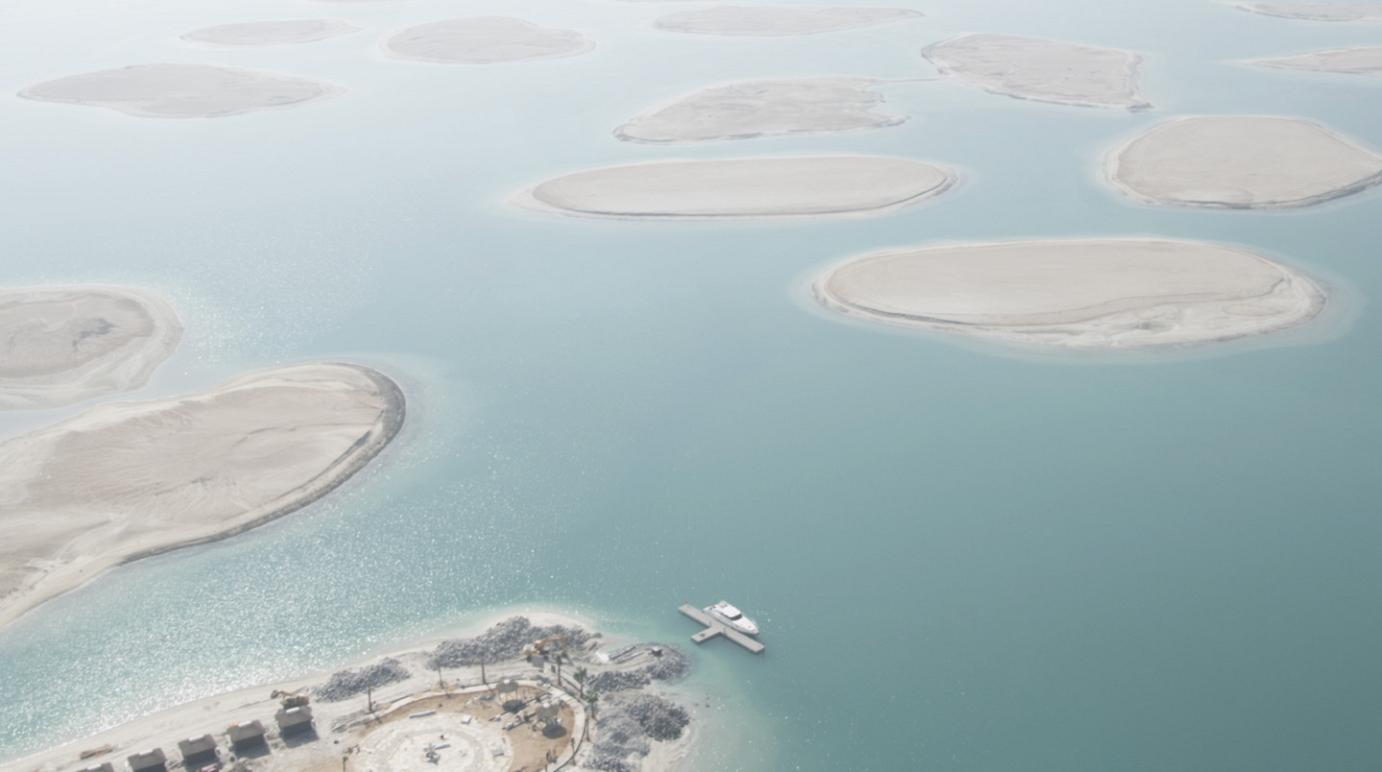Mud and Money: The World Archipelago
/ Mud and Money by Bruce Sterling:
Nowhere but in Dubai could the world be so richly re-imagined.
The World would be visible from the International Space Station, and it would look, more or less, like our actual world. To tell the truth, The World looked like a world fragmented into private real-estate lots, because The World was, in fact, a huge yacht harbor. Asia, Africa and the Americas had been broken to sellable bits.
The World, being newborn and consummately artificial, would have five special qualities unknown in lesser settlements. It would have technical intelligence. Marketing magic. Royal grandeur. Visceral appeal. And it would leave a legacy to astonish the world for generations.
These were plausible aims. They merely seemed unlikely by the standards of places in the world that weren’t Dubai. Before the fiery launch of the War on Terror, Dubai had been a backwater emirate with an ancient fishing port and a couple of modest high-rises. As ruin stalked the Middle East, this oasis had escaped the deadly Curse of Oil, because Dubai didn’t have any. Instead, Dubai had a grand strategy to launder other people’s oil money, through finance, shipping logistics, trade, and tourism — all of them dependent on Dubai’s 85% foreign population of jetsetters and migrant laborers.
From the point of view of the Dubai locals, The World was a highly logical solution to Dubai’s unique problems. As landlord, Dubai wanted to lure in the world’s richest tenants. These eccentrics would be cordially parked in fancy island mansions five kilometers offshore, with their own malls and resort bars. The apotheosis of liberal capitalism was a golden ultra-ghetto.
Unfortunately the success of The World was entirely dependent on the goodwill of foreigners. The scheme failed abjectly, but this had nothing to do with Dubai’s stellar ability to construct new infrastructure out of mere sand.
It was the world that failed Dubai, because a planetary real estate crisis in 2008 broke the nerves of the very clientele who should have chosen to infest a resort like The World. The global overclass had panicked, and Dubai’s many other newly-built charms: the huge robot tramway, the ozone-piercing skyscraper, the seven-star seaside hotel shaped like a sail — none of these things could mellow them. The planetary elite had lost their taste for real-estate flipping at precisely the moment that a tax-free entrepot in an autocratic micro-state might have been really handy.
Dubai had finessed the deadly War on Terror by offering the world an Arab sheikdom even more globalized than the West; but in a credit crunch, Dubai was just another paper-shuffling finance hub.
No buyers, no World. Under capitalism, nobody can huge build a royal utopia just to have one. So the oddly-shaped cluster of islands became one of the world’s largest shipping hazards.
There are those who claim The World is sinking back into the mud that gave it birth, but since it’s made of 321 million cubic metres of sand spread over 31 million tons of rock, that fate is unlikely. The World isn’t sinking to perdition. Not at all. Having lost its reason, The World is just sitting there.
Credits:
A film produced for Utilitas Interrupta
Aerial filming by Navigation Films
Supervision and production by Elian Stefa
Accompanying text by Bruce Sterling
Exhibition dates:
28 September – 27 November 2011: experimentadesign 2011: Useless, Lisbon

